Harsil Valley sits as the crown of Uttarakhand, located in the district of Uttarkashi. The valley is situated at an elevation of 2620 meters on the banks of river Bhagirathi. Popularly known as the Switzerland of India. This valley is a cluster of 8 villages, namely, Sukki, Mukbha/Mukhva, Harsil, Bagori, Dharali, Jhala, Jaspur & Purali.
Harsil Valley is a part of the pious trip to Gangotri Dham which is just 25 km away from it. Many bypass this valley and never experience its beautiful orchard, homestays and views of Mt.Bandarpoonch and Mt.Srikant, among other peaks. You can witness mixed traditions and cultures of Hindus, Buddhists, and Jadh Bhotia community natives of Nelong Valley.
Table of Contents
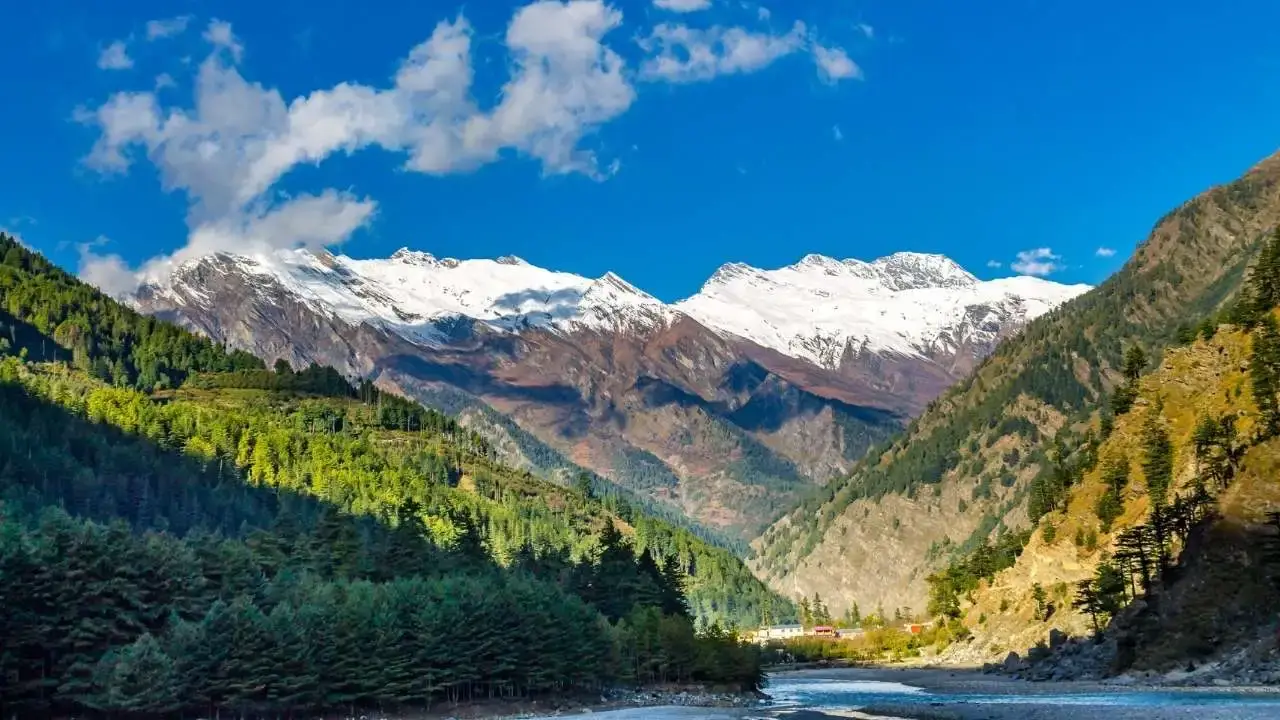
Mythology
The name of the valley is believed to be derived from a local tale. When both mighty rivers, Bhagirathi and Jalandhari, argued over who was more significant, Lord Vishnu was asked to intervene. Instead of taking one name, Lord Vishnu turned himself into a Shila, which means rock and absorbed all their anger; it is believed that the turbulence in the rivers is slowed down. Harsil can be broken into two words – Hari means Lord Vishnu and Shil is rock; hence it is Harsil.
History
Harsil had old ties with Tibet when trade and marriages thrived between 2 places. But after the Indo-China war in 1962, the situation changed. For safety purposes, the native communities of Nelong Valley, known as Jadh Bhotiyas, were relocated to the Bagori village of Harsil Valley. The region of Nelong Valley remained closed until it was reopened in 2015 for Indian Citizens; you have to issue an inner line permit to visit. Considering the sensitivity of the area, foreigners are not allowed to visit, and no one can camp in the region. Townsfolk still strive to live in their homelands and start the life where they left it.
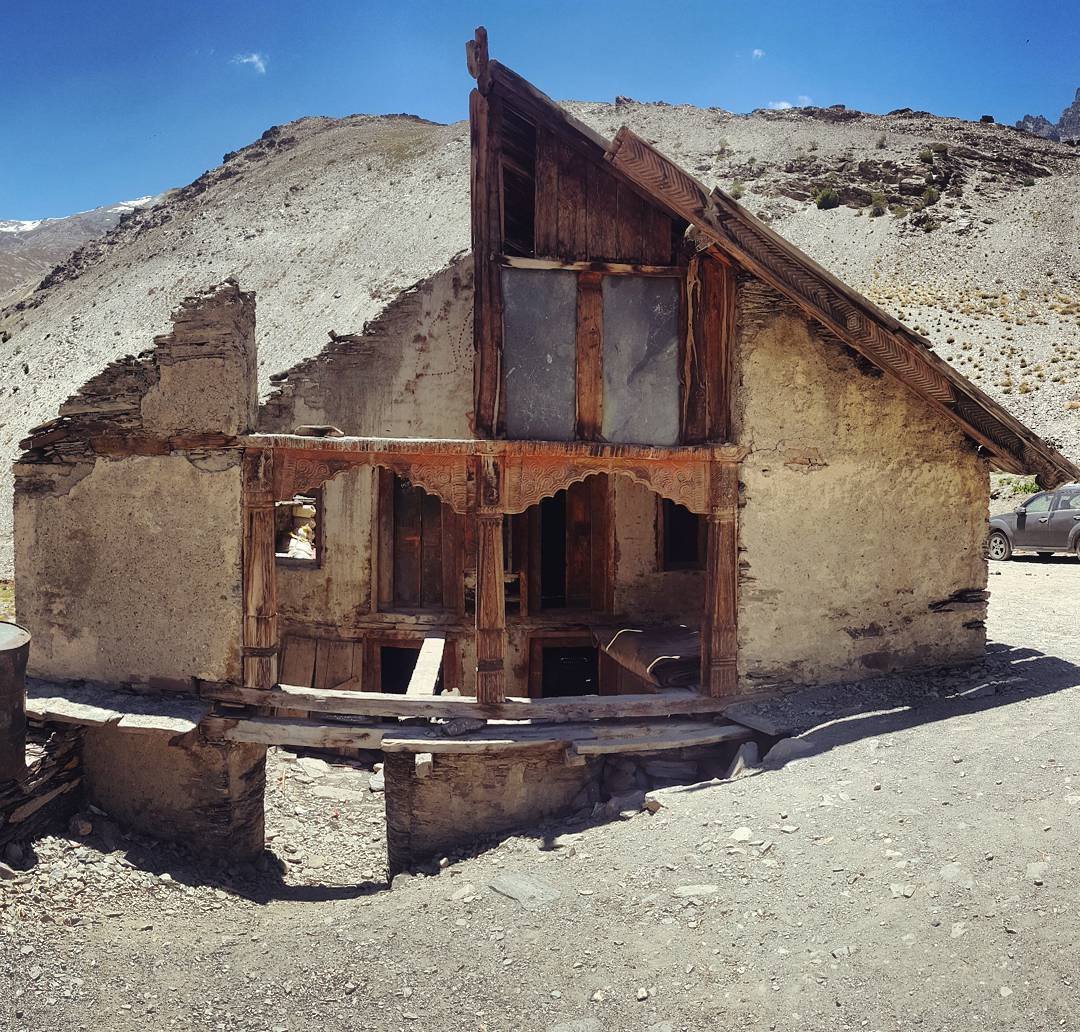
Harshil Valley is famous for its rich taste and crispy apples, which were introduced in the valley by Febrick Willson. Mr. Wilson worked under the British India company, and it was mid 19th century when he visited Harsil Valley as a retreat. Being so mesmerised by the valley’s beauty, he left the job and shifted to the harsil valley. Fedrick introduced apple cultivation and other cash crops like rajma in the valley. Mr. Wilson was also known as “Pahadi Wilson” or “Raja Wilson”.
How to reach Harsil Valley
Harsil Valley is well-connected to cities like Dehradun, Rishikesh and Uttarkashi. To reach any of these cities/towns, you can hail a shared taxi or private one or a bus to reach Harshil. There’s no direct train or flight to Harshil. The most common practice is to reach Delhi first. From there, you can choose different modes of transport to reach any major city of Uttarakhand.
By Air (Flight)
The nearest airport is Jolly Grant Airport of Dehradun, which is 232 km away. You can book a direct flight to Dehradun otherwise, it is well-connected with Delhi Airport. As the capital of the country, all major cities have direct flights to Delhi. From Delhi, you can book a flight to Jolly Grant.
Another option: After reaching Delhi you can book a train to Dehradun and enjoy the scenic route. You can read in detail about how to reach Dehradun from Delhi.
By Train
The nearest railway stations to Harsil are Rishikesh, Haridwar and Dehradun. Here are a few options for the train which you can book from Delhi to reach these cities.
12017 – Dehradun Shatabdi Express | New Delhi to Dehradoon | Runs Daily |
Running Time – 06:10 Hrs
You can book this train to Haridwar as it comes first.
12055 – Jan Shatabdi | New Delhi to Dehradoon | Runs Daily |
Running Time – 05:50 Hrs
You can book this train to Haridwar as well and plan accordingly.
22659 – Kochuveli Yog Nagri Rishikesh Superfast Express | Runs – Friday |
You can book the tickets from Hazrat Nizammudin Junction to Haridwar or the last stop -Yog Nagri Rishikesh.
Note – Starts Friday from Kochevli, Kerala. Check the train schedule for your city.
Pro Tip: This train starts from Kochuveli, Kerala, covering major stations like Mangalore, Madgaon, Panvel, Vasai Road, Surat, Vadodara and Kota. Consider taking this train if you prefer not to change trains between these cities and Delhi.
14309 – Ujjaini Express | Lakshmibai nagar to Yog Nagri Rishikesh | Runs – Wed, Thu |
You can book the tickets from Hazrat Nizammudin Junction to Haridwar or the last stop -Yog Nagri Rishikesh.
Pro Tip: This train starts from Lakshmibai Nagar, a local railway station in Ujjain. This train covers other major cities like Shajapur, Gwalior, Morena, Agra, Mathura, Meerut etc. Consider taking this train if you prefer to travel non-stop between these cities and Haridwar or Rishikesh.
Tip – Avoid booking Mussories Express, as it tends to be delayed, which can hamper your planning.
By Bus
With the combination of the above transport methods, you can reach Delhi and book your bus tickets. From Delhi, you can easily find buses for Dehradun, Haridwar, or Rishikesh. The three major bus stops in Delhi are Kashmiri Gate, Anand Vihar and Sarai Kale Khan. Read our detailed guide on how to reach Uttarkashi from there; also; you can book a private cab or taxi.
Note: Consider traveling by helicopter to reach Uttarkashi quickly when you’re short on time and want to make the most of it.
Dehradun to Harsil (216 km)
Take an early morning UTC bus from the Dehradun Hill Bus Station to Uttarkashi. From there, you can catch a shared taxi to Harsil. Alternatively, you can book a bus to Gangotri from Dehradun or Rishikesh and deboard at Harsil, which is before Gangotri. Please note that these buses operate only during the Char Dham Yatra season.
Best Time to Visit Harsil Valley
Harsil Valley is worth visiting every month of the Year. Sitting on the banks of river Bhagirathi beside the Garhwal Himalayas, Harsil valley is a site to behold.
Winters – The White Beauty
Months – December, February and early March
Get ready for a winter wonderland from December through mid-March as the valley gets covered in beautiful snow! For all snow lovers, this is the perfect Time to visit Harsil Valley. Avoid visiting from late January to February as the weather gets extremely cold, even the locals shift to other lower villages for winters.
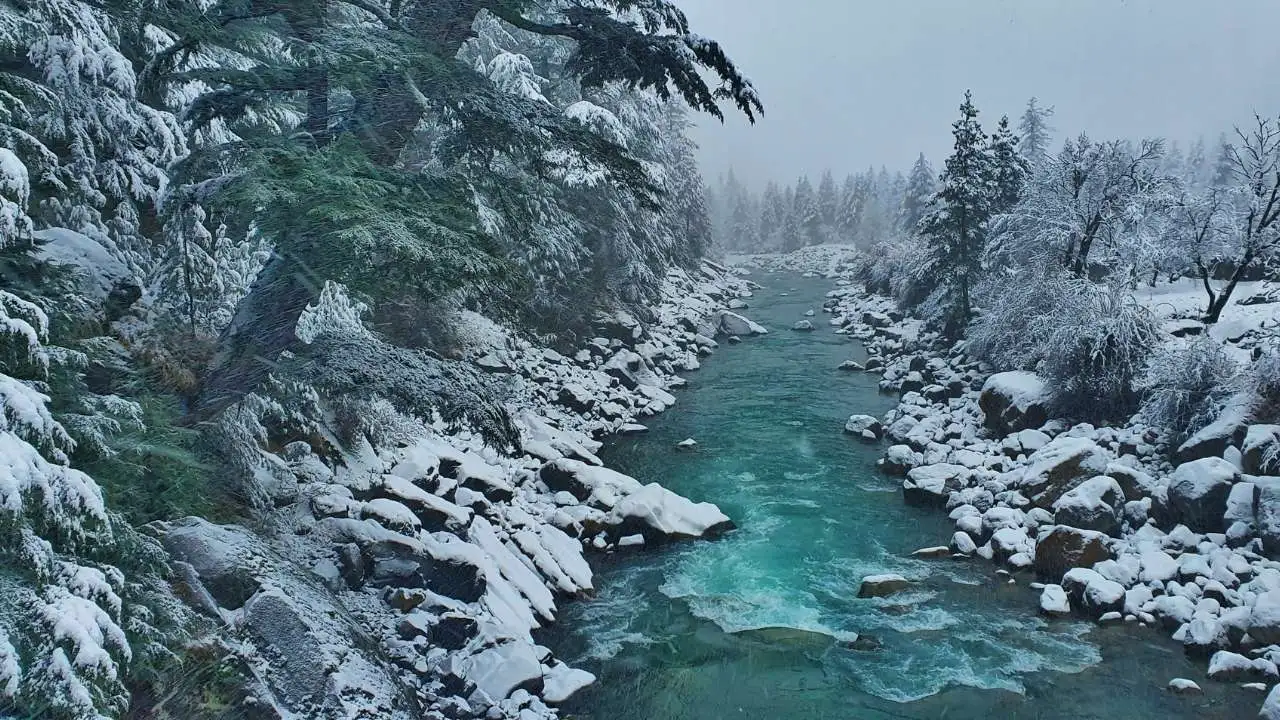
Spring – Colors and Freshness of Apple Blossom
Months – Late March to early May
With the snow melting colours, people and life return to the valley. With light coldness in the weather, you can enjoy the freshly cultivated famous Apples of the valley.
Summer – Not so hot but cool
Months – Mid-May to June
Summer never really arrives in Harshil Valley. Even in the summer, the weather remains crisp and soft breezes of cold air. If you want to explore the valley’s treks and hike through it, then this is the perfect Time to visit.
Monsoon – Rains and powerful rivers
Months – July to September
Surrounded by the vibrant greens and whites of the forest, the valley turns into a paradise during monsoon. Due to heavy rainfall, it is not advised to visit during July and August as the area becomes prone to landslides. During this time, the rivers can turn quite menacing and add to the risk factor.
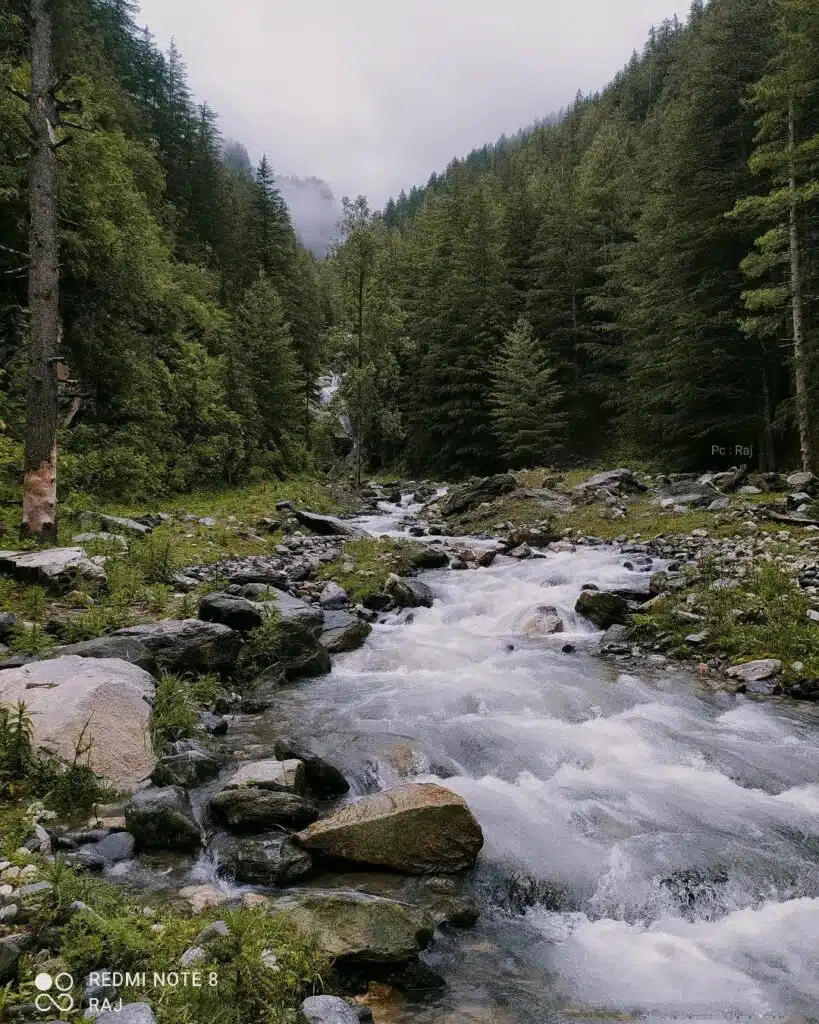
Autumn – Splash of Brown and Golden
Months – October & November
With the leaving monsoon and the upcoming winter, the valleys present alluring views to the visitors. Witness the famous Apple festival which is usually organised in the last week of October. Autumn presents the best opportunity to experience local culture and traditions.
Read our detailed guide on the best time to visit Harsil Valley.
Places to visit in Harsil Valley
The Harsil Valley of Uttarakhand caters to everyone’s needs. You can relax in the peaceful villages or find an adventurous trek to satisfy your quest for thrill. Find out why Harsil Valley can be your perfect weekend getaway.
Here’s a list of places you must include in your itinerary.
Gartang Gali
Gartang Gali is a wooden sidewalk bridge hanging above the Jadh Ganga River. Gartang Gali takes us to a time when trade flourished between the people of Tibet and the locals of this side. The bridge was a part of the Indo-Tibet Salt route. This bridge is an example of the marvellous architecture and the skills of the locals who made this bridge.
Read our detailed itinerary and learn unknown facts about Gartang Gali.

Laxmi Narayan Temple
This is a small yet beautiful temple nestled in Harsil Village. According to mythological lore, there was a powerful demon, Jalandhar, who ruled over all 3 worlds. Jalandhar’s life was entwined with his beloved wife – Brinda, so killing him, Lord Vishnu changed his appearance into Jalandhar. When Brinda realised that Lord Vishnu had tricked her and killed her husband, she gave him the curse to turn into a Shila (a rock). Another curse Brinda gave was Lord Vishnu would also lose his love to demons and have to search for her in the rest. The curse was fulfilled in Ramayana with Lord Vishnu’s incarnation as Ram and his consort Devi Laxmi as Sita.
Bagori Village
You can reach Bagori through Harsil village by walking for 10-15 mins. The village has roughly 150 houses with their apple gardens. Apart from delicious apples, Bagori also offers delightful Apricots, which you should not miss. Mostly the Bhotiya community lives in this village, “Bhotiya” translates to – people from the North. This village weaves a perfect blend of both Hinduism and Buddhism. You can visit the temple of Laal Devta – a local deity and Buddhist Monsetaries side by side. Enjoy the views in the pure serenity of Bagori Village.
Pro Tip – Avoid visiting in the winter season. The villagers leave their homes and shift to Dunda village for 6 months to escape the harsh climate. During winters, Bagori turns into a ghost village, you’ll hardly find anyone here.
Dharali Village
Update: In August 2025, most of Dharali village was destroyed. Only one section of the village remains standing now. The Kalp Kedar Temple has been buried under mud and debris.
Mukhba/Mukhva Village
Want to visit Maa Ganga’s Mayka? Then visit Mukhbha, a tiny village in Harshil valley with great importance. The name of the village comes from its famous temple, Mukhba. Mukhba temple is Goddesses Ganga’s winter abode. When winter arrives in the harshil valley & Gangotri Dham, the idol of Maa Ganga, is brought down in Dolli (palanquins) to Mukhba Temple. Villagers lovingly call their village Maa Ganga’s Mayka and perform pooja and rituals for Goddesses Ganga.
Though a new concrete temple is made, don’t forget to visit the old wooden temple. If you as the priest of the temple, they will open the old temple for you to explore.
Mandakini Waterfalls
This is the infamous waterfall from the movie Ram Teri Ganga Maili in Harsil. Named after the lead actress, Manadakini performed in the waterfall for a song. You can reach here after a short hike from harsil village and enjoy the dazzling atmosphere.
Sukkhi Top
The state of Uttarakhand is studded with many gem-like villages, and Sukkhi is one of them. You can visit Sukkhi on your way to Harsil, as it is just 5-6 km before Harsil Valley. Sukhi Top is the highest part of Harsil Valley. From here, you get a view of the valley.
Sukkhi Top gives you a chance to witness a ridge in real life between Sian Gad and Jallandhari Gad. You can also behold the view of a glacier gushing from the Lamkhaga side of the valley.

Nelong Valley
Valley with the landscape of Ladakh and Tibet. Villages of Nelong, Jadung, and Keelang were once inhabited by the Jadh people but war changed everything. Consider Nelong if you enjoy road trips, geography, and history. A detailed guide to Nelong can be read here.
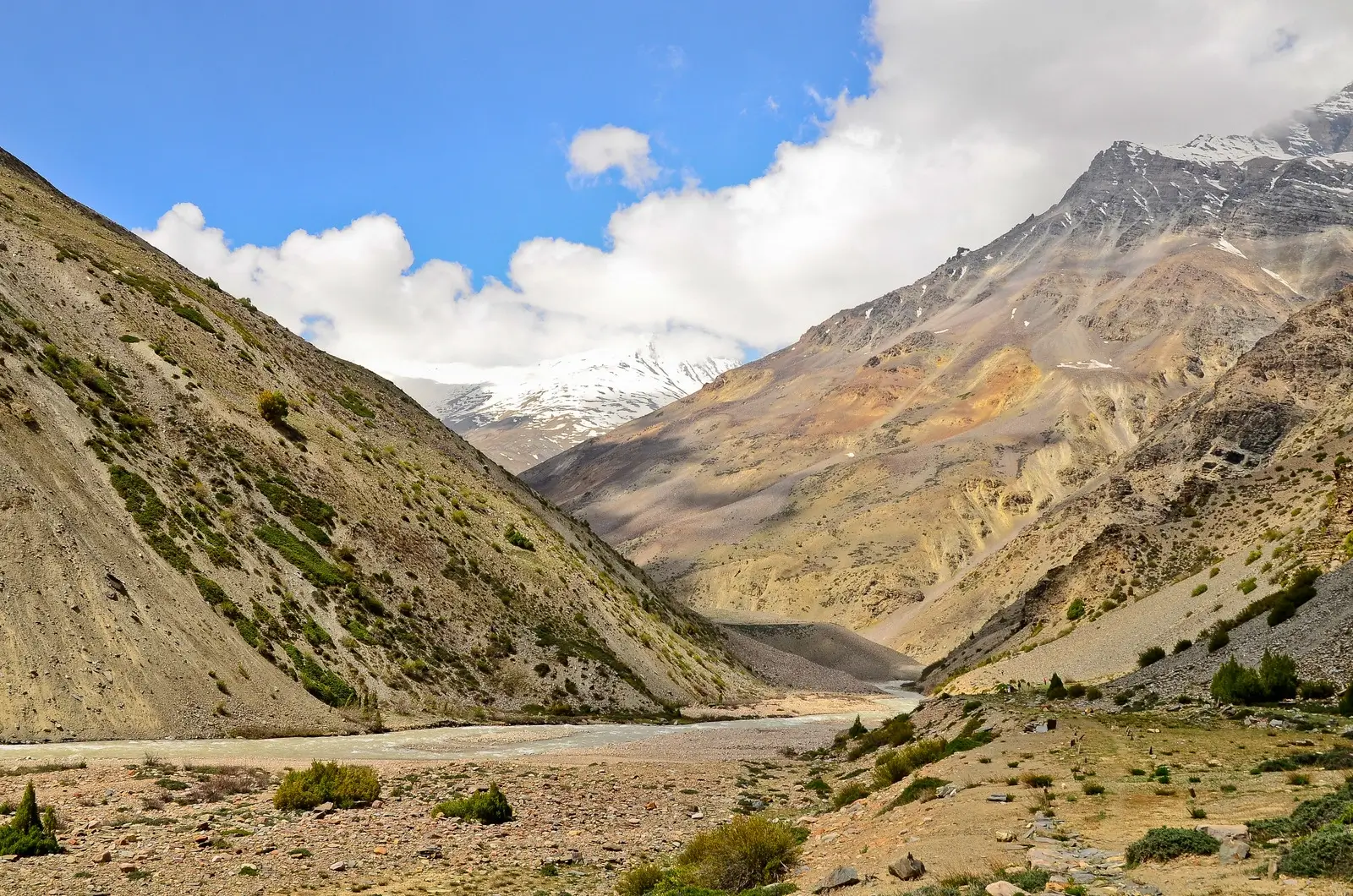
Gangnani
Nestled between snowy Himalayan peaks, Gangnani is a hot water spring.
Gangnani is a small village; the distance between harsil and Gangnani is 31 km.
Dedicated to Rishi Parashar, devotees take a bath here before preciding for Gangotri Dham. Visit this nature’s wonder and experience tranquillity.
Pro tip – Don’t forget to enjoy local cuisines like white rajma, sisunaak saag, pahadi raita, gehat daal, chainsoo and kappa when in the valley.
Treks in Harsil Valley
Harshil Valley is a trove of different treks for viewpoints, lakes and bugyals. You can challenge yourself with a thrilling trek or do a relaxing hike.
Sattal Trek

Sattal is only 3 km away from Harsil from Dharali Village. As the name “sat” suggests, there are 7 lakes to be found here. Also, visit the famous Vishwanath Temple of Lord Shiva here. You can challenge yourself with this uphill steep trek and enjoy the glacier lakes.
Note – Visit in spring so that you find water in lakes; otherwise, in seasons like winter, lakes are frozen or dried in summer.
Lama Top
Lama Top trek is again a steep but 5-6 km (to and fro) short trek from Bagori Village, and you can also do this from Dharali Village. As the name suggests, the top is sacred to Buddhist people. Though the trail is sharp, you can summit the top easily and enjoy the hike. This place is heaven for bird photographers as you can spot several birds of Bagori village like Snow Sparrow, Alpine Chough, Russet Sparrow etc.
From the top, you can relish the panoramic view of the Harsil Valley. You’ll also find a tree trunk where people stick their coins for happiness and prosperity.
It is said if you pray closer to the sky, God can listen to them easily as you are closer. That’s why you’ll see Buddhist flags at higher altitudes all around the Himalayas.
Check the list of other treks you can do from Harsil Valley
- Horns of Harsil Basecamp
- Gaumukh Tapovan
- Kedartal Trek
- Lamkhaga Pass
- Kyakoti Trek
- Jhinda Bugyal
- Srikanth Basecamp
- Awana Bugyal
- Dhumdar Knadi Pass Trek
- Bamsaru Pass Trek
- Bandarpunch Basecamp Trek
River Rafting in Harsil
For all the adventure enthusiasts, now you don’t have to go to Rishikesh for rafting. You can enjoy a thrilling 20 km long rafting in the Alaknanda river from Jungle Pul to Jhala Pul. Covering 3 major areas, Jangla, Harsil, and Jhala, this river rafting will fill you with adrenaline levels. Try this exhilarating activity and indulge in nature.
Festivals
Apple Festival
Until now you know that Harsil offers you one of the finest apples in the country. Our tasty apples face tough competition from other famous varieties like Himachal or Kashmiri due to less promotion and awareness. Then IAS Officer Mr. Ashish Chauhan took the initiative and started the Apple Festival of Harsil in the Year 2018. This festival created awareness, promoted local farmers and attracted international eyes as well.
The valley produces several kinds of apples like Golden Delicious, Royal Delicious, and Red Delicious apples. You can also buy authentic jam, juice and apple cider vinegar at this festival and throughout the season.
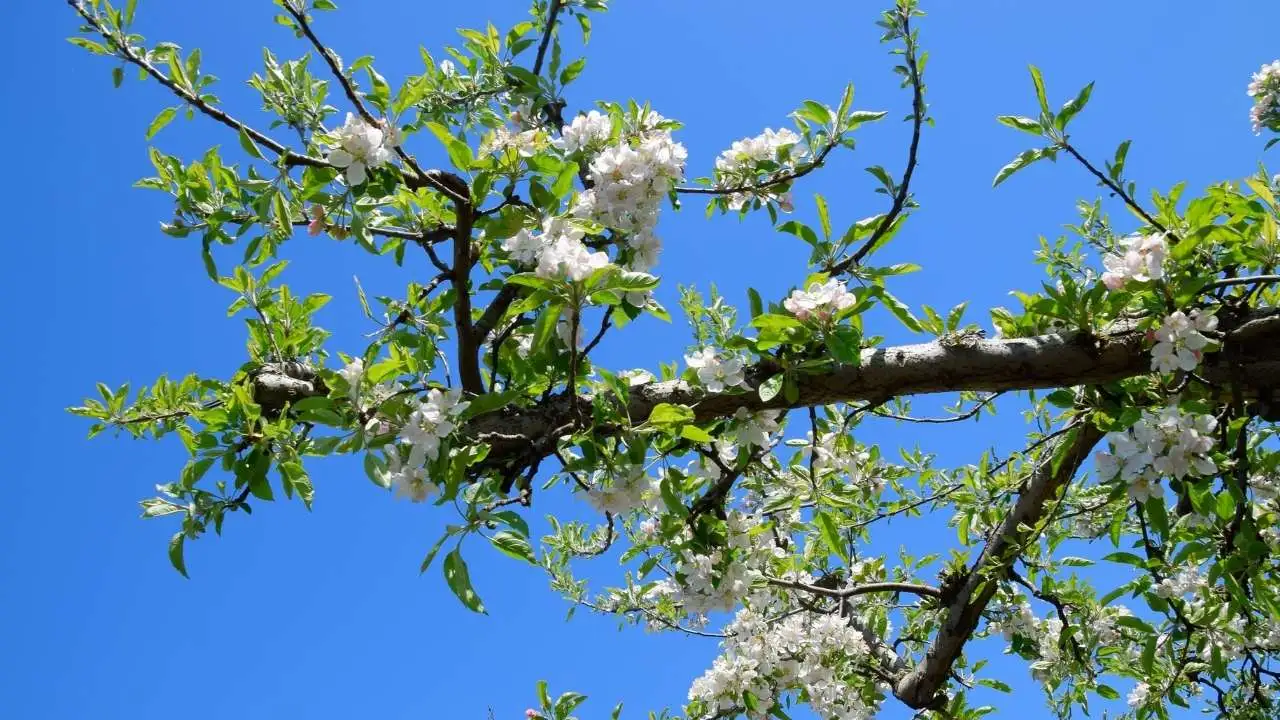
You can buy online these apples and products to appreciate our hardworking farmers and boost the economy in the region here.
Losar Festival
As per the Tibetan language, Lo means New and Sar means Year, which together become New Year or Losar. This is a 3-day festival that falls in the month of Phalgun month and Shukla Pratipada tithi. However, dates are followed according to the Hindu calendar.
Day 1: Diwali is celebrated by lighting torches made of pine leaves.
Day 2: Farm animals are made using flour and rice chhang to offer it to God for better yields and animal husbandry. These animals roam around Mt.Kalisha.
Day 3: People play Holi with flour with delight and dance and celebrate the New Year.
Jadh Bhotia of Harsil follows both Hinduism and Buddhism. During Losar, they celebrate it with their protector deity ‘Ringali Devi’.
Throughout these days people replace their old flags with new ones on which Mantras are written in Pali language. You can witness women in traditional dress called Kolak – a loose shirt with a green coat performing the traditional dance of Raso and Tandi. Through this festival, you can experience the traditions and culture of the valley in the most authentic way.
Wrapping Up
Harsil Valley of Uttarakhand is indeed a unique and incredible landscape of our country. One can visit this place to find peace, do adventurous activities, trek, or see life through a different lens of the local community. Leave no stone turned to explore this amazing valley.
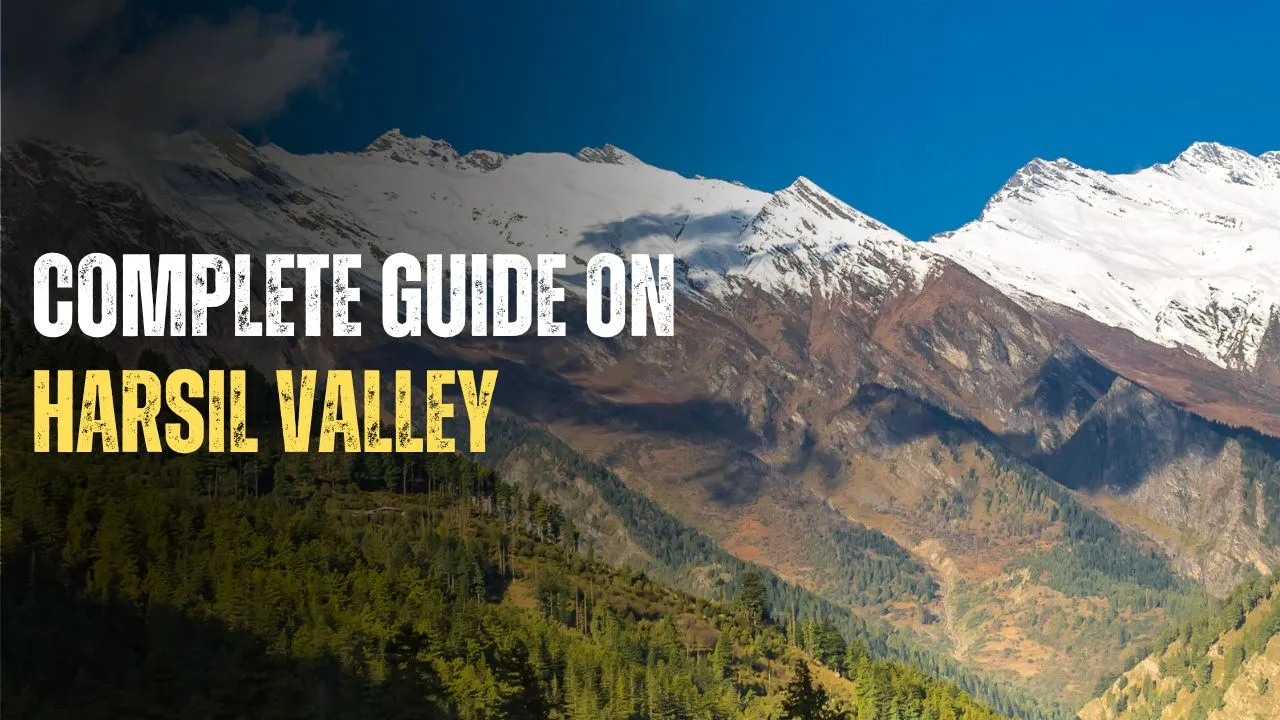
Leave a Comment